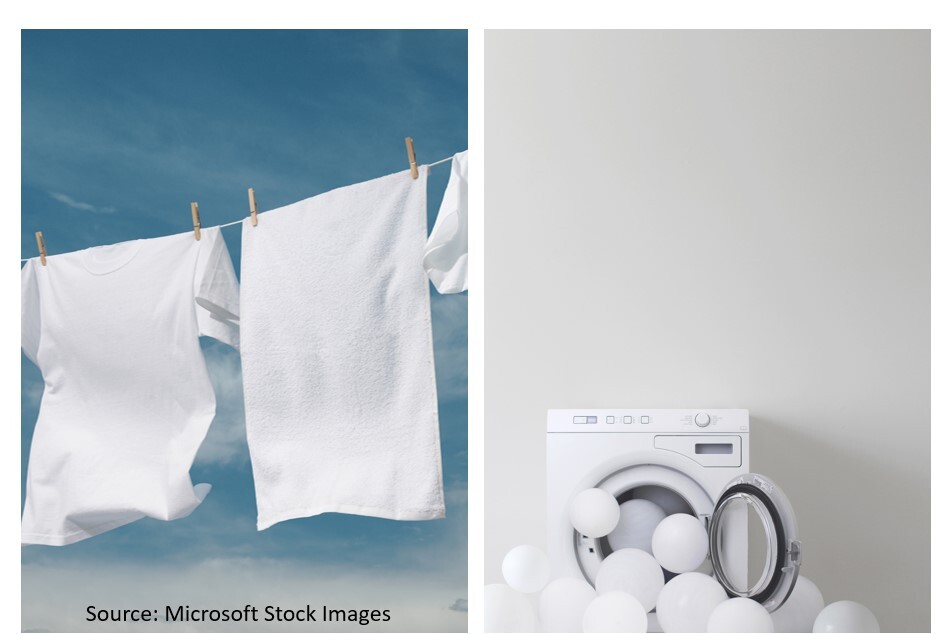
Laundries can also implement water saving measures. First of all, try to reduce the amount of textiles that go into the wash. Encourage guests to reuse towels and linens. Minimize the use of tablecloths and napkins in restaurants.
Choosing efficient equipment is one of the most important measures to save water and energy in laundries. The average specific water consumption of household washing machines decreased from 13.9 liters per kg of laundry in 1997 to 9.6 liters per kg in 2005, and the average energy consumption is now 0.17 kWh/kg of laundry. Washing machines are more efficient at full loads than at light loads, even when using the half load program. Washing can be optimized by: separating the laundry into batches depending on the washing and drying requirements; full loading of washing machines with these batches; reuse of rinse water (after rinsing) for prewash at the next load; selection of appropriate program settings (especially time and temperature) to minimize water and energy consumption.
Legislation in many developed countries allows the use of water from laundry and from showers and hand basins (but not from kitchens and toilets) for irrigating areas and flushing toilets. This use of water helps save irrigation and domestic water costs (see below: gray water